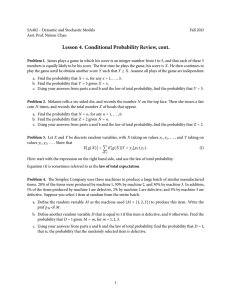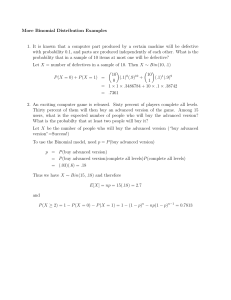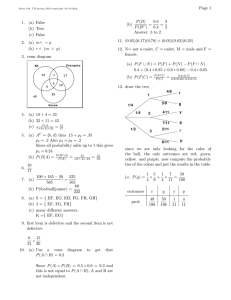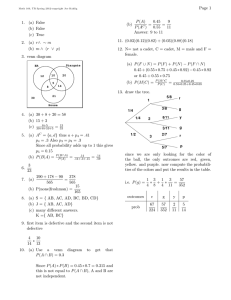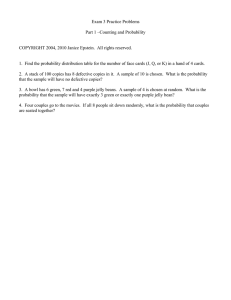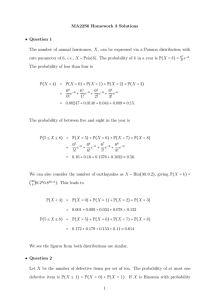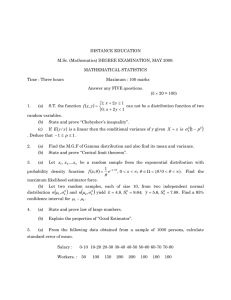Club No. j-3Ics no.0 37I.+
advertisement
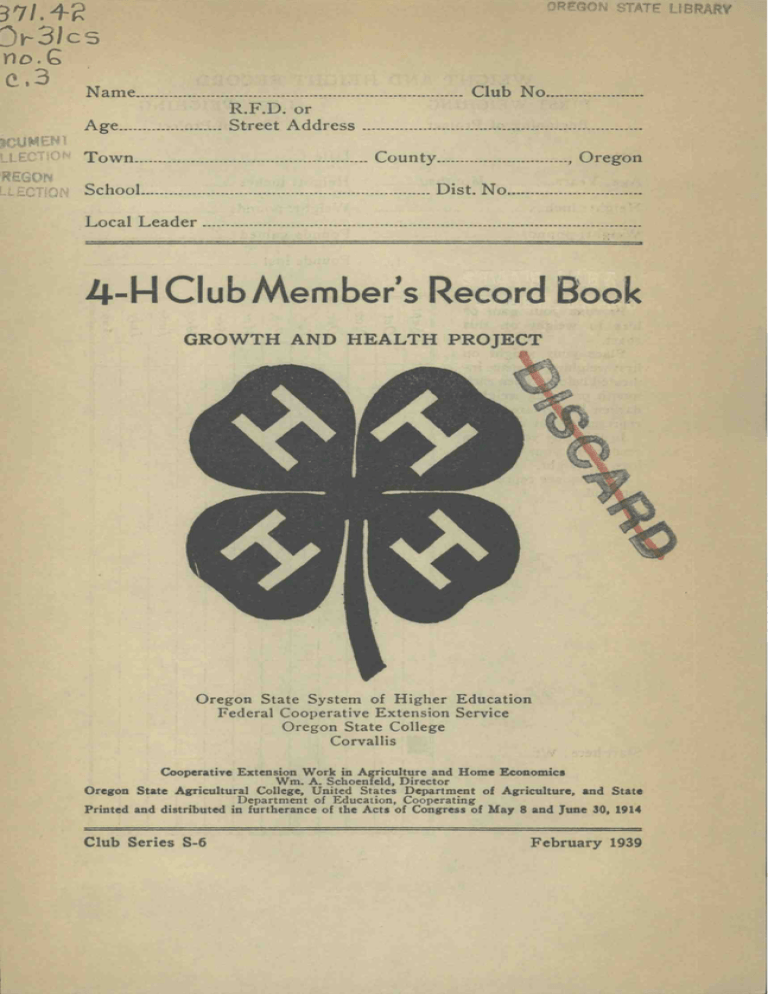
iTF 37I.+ j-3Ics no.0 Name - R.F.D. or Age ---------------------- Street Address Club No. ............................................................ Town -------------------------------------------------- County ----------------------------- Oregon School -------------------------------------------------------------- Dist. No ............................. LocalLeader .............................................................................................. 4-I-I Club Member's Record Book GROWTH AND HEALTH PROJECT Oregon State System of Higher Education Federal Cooperative Extension Service Oregon State College Corvallis Cooperative Extension Work in Agriculture and Home Economics Wm. A. Schoenfeld, Director Oregon State Agricultural College, United States Department of Agriculture, and State Department of Education, Cooperating Printed and distributed in furtherance of the Acts of Congress of May 8 and June 30, 1914 Club Series S-6 February 1939 FPARY WEIGHT AND HEIGHT RECORD FIRST WEIGHING Beginning of Project LAST WEIGHING Close of Project Date Date................... Age: Years._ ----------- Months .............. Height: inches Height: inches ...................................... Weight: pounds Weight: pounds .................................... Pounds gained. Pounds lost ....... Picru your gain or -H lou in weight on this b ?-. ; chart. Place your weight on first weighing in space indicated below. Then each month on being weighed darken the square which represents your weight. In this way you keep a H-'- record of your gain or loss in weight. Each square represents 1 pound. I Start here: Wt ................... 1j__ IEI[ fI I I H rr PHYSICAL RECORD REPORT Each 4-H Health Club member will check, or have checked upon inspection or examination by teacher, health nurse, or physician, his or her physical condition as listed below. CHECK or indicate who made inspection or examination: Teacher (.) Nurse () Physician (.). Consider NORMAL when no professional treatment is needed or where professional treatment has been employed to correct defects. Consider DEFECTS as conditions where professional attention is needed but not yet employed. Check (V) NORMAL or DEFECTIVE as case may be. BEGINNING OF PROJECT . COMPLETION OF PROJECT EYES: normal (..) defective C...) EYES: normal (..) defective (...) EARS: normal () defective () EARS: normal () defective () NOSE: normal (..) defective (....) NOSE: normal (....) defective (..) THROAT: normal () defective () THROAT: normal TEETH: normal (.) defective (.) TEETH: ; ; ; ; ; POSTURE: normal (...) ; defective (....) ; ; ; (....) ; defective (._) normal (); defective (....) POSTURE: normal (.4 ; defective (...) PHYSICIAN ONLY HEART: normal (...) defective (...) HEART: normal (....) defective (...) LUNGS: normal (....) defective (....) LUNGS: normal (..) defective (.4 GLANDS: normal (.) defective (....) GLANDS: normal (....) ; ; ; SKIN: normal (....) defective (....) ORTHOPEDIC: ; n'l (....) defective (....) ; ; ; SKIN: normal ORTHOPEDIC: defective (....) ; (...) ; defective (....) n'l (....) defective (...) ; IMMUNIZATION REPORT HEALTH is preserved by fighting diseases before they attack the body. IMMUNIZATION is the most successful defense against disease. Your County Health Unit holds an immunization clinic each year for pre- vention of Smallpox and Diphtheria or your physician can give you this service. Check CV) the report below indicating whether or not you have had a vaccination for the prevention of Smallpox, and Toxin-antitoxin or Toxoid for the prevention of Diphtheria. BEFORE PRESENT SCHOOL DURING PRESENT SCHOOL YEAR YEAR SMALLPDX vacci- SMALLPDX vacci- nation: Yes () ; No (...) nation: DIPHTHERIA: Toxoid or Toxin- DIPHTHERIA: Toxoid or Toxin- antitoxin: SCHIcK TEST: Yes antitoxin: ; No (...) Neg. () ;Pos. Yes () ; No (...) ScHICK TEST: (.) Yes () ; No () Neg. () Pos. () TUBERCULIN TEST Negative (); positive () Negative (); positive () If positive, medical examination If positive, medical examination including fiuroscope or X-ray of including fluroscope or X-ray of chest: Yes (); No (._.) chest: Yes (); No (..) COLDS Colds are annoying at least and may lead to more serious diseases. Influenza, measles, scarlet fever, or whooping cough may start with what seems to be only a sore throat or cold. AVOID TAKING COLD. The following chart should be used to record the months in which you have a cold. Place a cross (x) in the square under the month you have a cold. A contest to see who will have no colds during the school year would be interesting. 4 Sept. Oct. Nov. Dec. Jan. Feb. March April May June July Aug. HEALTH HABITS TO BE PRACTICED AT HOME AND AT SCHOOL Each of the personal activities listed below will help you to health and happiness. Some of these things help you to grow normally. Others aid you to keep well or to become more comfortable, and at the same time to make you better company when in the presence of other people. It is fine to do all of these things naturally as habits without thinking about them. You can establish a habit quickly when young by selecting something you wish to do to improve yourself, and then carefully remembering a few times to perform the activity chosen until you do it with little or no thought. Read over the sections of health habits that follow, and select at least one in which you wish to make improvement. Check it (V) on the left side of the page. At the beginning of each two months' period repeat this process, thus working on at least four habits for improvement during the school year. At the end of the project, check (V) on the right side those habits in which you have made improvement. HEALTHFUL FOOD HABITS FOR A NORMAL PERSON 1. () Eating a well-balanced daily diet. (...) Eating a good breakfast.. 2. ------------------------------------------------------------ () -------------------------------------------- - ----------------------------- (..) 3. (....) Eating a good school lunch.. --------------------------------------------------------------------- 4. (.) Eating a hot school lunch dish ------------------------------------------------------------------ (....) 5. (..) Eating meals at regular time--------------------------------------------------------------------- (.) 6. (...) Eating no sweets between meals.. ------------------------------------------------------------- 7. (..) Eating slowly (very important) .................. . -------------------------------------------- (..) 8. (.....) Learning to like wholesome foods heretofore not eaten. List here: _----------......-- ---------------- - ---------------------------------------------- - ---------------------- (---.) 5 PERSONAL CLEANLINESS HABITS WORTH ACQUIRING 1. (.) Washing hands before eating ----------------------------------------------------------- (---.) 2. () Brushing teeth daily: () Once ------------------------------------------------------------ (.---) () Twice.. -------------------------------------------------------- (...) 3. (.) Taking a bath weekly: (.) Once ----------------------------------------------------------- (-) (....)Twice ---------------------------------------------------------- (...) 4. () Regular change of clothes -------------------------------------------------------------------------- 5. (....) Regular care of hair -------------------------------------------------------------------------------------- (.---) 6. (.) Regular care of nails ------------------------------------------------------------------------------------ 7. () Washing hands after using toilet -------------------------------------------------------------- (....) HEALTHFUL HABITS OF REST AND EXERCISE 1. (....) Required sleep for age ---------------------------------------------------------------------------------- (. ) 2. () Sleeping with windows open ---------------------------------------------------------------------- (----) 3. (...) Rest periods daily ----------------------------------------------------------------------------------------- 4. (..) Two hours daily exercise outdoors ---------------------------------------------------------5. (----) Stopping exercise before body becomes overfatigued or strained-------------------------------------------------------------------------------------------- (,..) GOOD POSTURE 1. () Sitting -------------------------------------------------------------------------------------------------------------- (----) 2. () Standing ---------------------------------------------------------------------------------------------------------- (.) 3. () Walking ---------------------------------------------------------------------------------------------------------- (____) SAFETY 1. (.) Using left side of road when walking ---------------------------------------------- (....) 2. () Stepping off highway when you meet a vehicle -------------------------- (....) 3. (.) Carrying light when walking or bicycling on highway at night-------------------------------------------------------------------------------------------------- (----) 4. () Careful use of axe and knife ---------------------------------------------------------------- (....) 5. () Keeping stairs and other passageways clear -------------------------------- (....) 6. (----) Careful use of matches and fire -------------------------------------------------------- (...) CLOTHING 1. () Keeping feet and head dry in wet weather ------------------------------------ (.) 2. () Removal of outdoor wraps when indoors ------------------------------------ (....) 3. () Wearing separate night clothing ------------------------------------------------------ () GOOD SPORTSMANSHIP 1. () Being a good loser as well as a good winner in sports -------------2. (....) Avoidance of tobacco and alcohol --------------------------------------------------3. (....) Improvement of mental habits and attitudes -------------------------------- (.._..) 6 STORY OF MY HEALTH CLUB WORK Tell something of what you have done to improve your health, how you enjoyed the project and what your Mother and Father think of the Health Project. Reprinted September 1940
